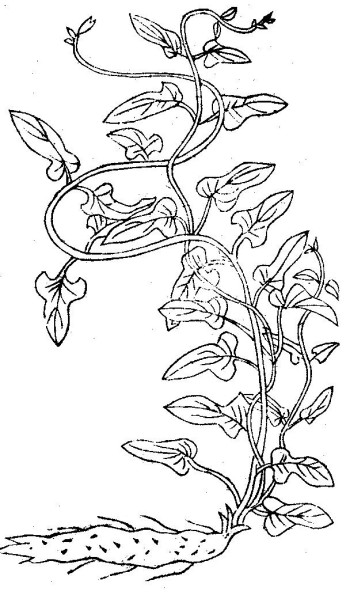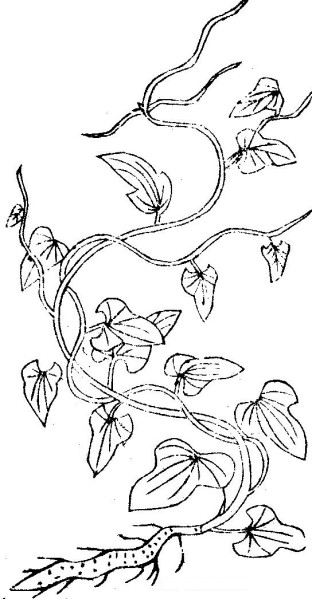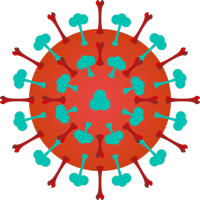| title | Chinese Yam |
| release time | 2006/2/3 |
| source | Jade Knock Studio |
The Chinese Yam used today is the dried rhizome of Dioscorea opposita Thunb., a plant of the Dioscoreaceae family. This product is widely cultivated across the country, with the best quality produced in Wen County, Wuzhi, Qinyang, Meng County, and Bo'ai in the Xinxiang region of Henan Province, known as one of the "Four Great Huai Medicines." Additionally, it is also produced in Hebei, Shaanxi, Jiangsu, Zhejiang, Jiangxi, Guizhou, and Sichuan.
Materia medica research suggests that the Chinese Yam used throughout history, also referred to as Chinese Yam, belongs to the Dioscorea genus of the Dioscoreaceae family. The use of the authentic Dioscorea opposita can be traced back to the Song Dynasty. By the early Ming Dynasty, Huaiqing in Henan had become the authentic production area for Chinese Yam, with cultivated varieties being the primary source for medicinal use.
bubble_chart Varietal Examination
Chinese Yam was originally named Shuyu, also written as Shuyu or Chinese Yam, first recorded in the Bencao Jing and classified as a superior product. Due to the taboo of using the name of Emperor Daizong of Tang, whose personal name was Yu, it was renamed Shuyao. Later, because of the taboo of Emperor Yingzong of Song, whose personal name was Shu, it was changed to Chinese Yam. According to the "Shanlu" by Gao Sisun of the Song Dynasty, quoting Zhang Shizheng's "Juanyou Zalu": "Chinese Yam, due to the taboo of Emperor Daizong of Tang, was renamed Yao. During the reign of Emperor Yingzong, it was called Yuyao. Sima Guang's poem about sending Chinese Yam seedlings reads: 'A guest from Wei brought me mountain yam seeds.' Thus, it was called Shanyu. Wang Anshi and Wang Qigong's poems about Chinese Yam with Cai Shumi refer to it as Chinese Yam. Huang Tingjian's poem about Shanyu soup with his seventh brother calls it Shanyu." Alternatively, according to the "Xuanhe Shupu," Wang Xizhi had a "Chinese Yam post," Wei Yingwu wrote, "Autumn study rain stagnates, Chinese Yam cold begins to bloom," and Han Yu's poem states, "The monk came to visit again, Chinese Yam can be dug and cooked." Thus, it is suggested that the name change to Chinese Yam did not originate from taboo avoidance. This argument is not appropriate. Chinese Yam has many aliases. The "Classic of Mountains and Seas: Northern Mountains" states: "Jingshan, its grass is mostly Shuyu." Guo Pu's annotation: "Now in Jiangnan, it is simply called Shu." The "Guangya" states: "Yuyan, Shuyu, Shuyu also." In materia medica, it is also known as Zhushu, Shanyu, Tushu, Xiucui, and Ercao. "Chinese Yam" and "Shanyu" are phonetic variations. Although this name existed before the Tang Dynasty, it was rarely used. Due to the excessive complexity of Chinese Yam names during the Tang and Song Dynasties, and the inconvenience caused by taboos, the name "Chinese Yam" gradually became the standard name during the Song and Yuan periods. As Kou Zongshi lamented: "Chinese Yam, according to materia medica, the upper part of the coin violates the taboo of Emperor Yingzong, the lower part is called Yu, and Emperor Daizong of Tang's personal name was Yu (should be Yu), so the lower part was changed to Yao. Now people call it Chinese Yam. Thus, the original name is completely lost, and I fear that over time, Chinese Yam will be considered a different substance, hence I record this."
"Wu Pu" states: "Shuyu, also known as Zhushu, in Qin and Chu, it is called Yuyan, in Qi and Yue, it is called Shanyang (Yang is likely a miswriting for Yu), in Zheng and Zhao, it is called Shanyang." Bielu records: "In Qin and Chu, it is called Yuyan, in Zheng and Yue, it is called Tushu." These records all refer to place names before the Qin Dynasty, proving that the use or medicinal history of Chinese Yam spans over two thousand years and is widely distributed. "Wu Pu" also describes its morphology: "Initially, it has red stems and thin vines, white flowers in May, green-yellow fruits in July, and ripens and falls in August. The root is white inside, with yellow skin resembling yam." Although the description is simple, it is undoubtedly a plant of the Dioscorea genus in the Dioscoreaceae family.In ancient times, Chinese Yam was not a single variety. The "Xin Xiu" states: "There are two types, one white and of good quality, and the other greenish-black, with a less pleasant taste." The "Zheng Lei" illustrates four medicinal drawings of Chinese Yam, all clearly belonging to the Dioscorea genus, but definitely not the same species. The Bencao Tujing also mentions that there are several types of Chinese Yam, but Su Song's description of the authentic variety closely resembles the Dioscorea opposita used today, or the Japanese Chinese Yam, Dioscorea japonica Thunb. Su describes: "In spring, it sprouts and spreads over fences, with purple stems and green leaves, having three pointed angles, similar to lobedleaf pharbitis seed but thicker and glossier. In summer, it blooms with small white flowers, resembling jujube flowers. In autumn, it bears fruit among the leaves, shaped like a bell." The so-called "fruit shaped like a bell among the leaves" refers to the bulbils, which are the gemmae of Chinese Yam. Interestingly, Su Song specifically mentions that wild Chinese Yam is superior to the cultivated kind: "In the south, there is a type that grows in the mountains, with roots as thin as a finger, extremely firm. When scraped and boiled in soup, it forms lumps that do not disperse, with a more precious and delicious taste. It is said to be especially beneficial to eat, surpassing those grown in gardens." Based on this, it might be inferred that the cultivation of Chinese Yam as a medicinal plant was not yet widespread in the Song Dynasty.


The Gangmu provides a more detailed description of Chinese Yam: "It blooms in clusters in May and June, with pale red flowers. The pods form in clusters, each with three ridges, hard and seedless, with seeds forming separately, resembling Thunder Balls, varying in size." Although Li Shizhen still respected Su Song's opinion that "wild Chinese Yam is superior for medicinal use, while cultivated ones are better for food," in reality, since the Ming Dynasty, Chinese Yam from Henan has been considered the best. Bencao Mengquan states: "It is produced in both northern and southern regions, but those from Huaiqing are the best." Bencao Yuanshi notes: "Today, people mostly use those from Huaiqing." Zhiwu Mingshi Tukao also mentions: "Those grown in the mountains of Huaiqing are white, fine, and firm, used for medicinal purposes." Clearly, regarding the cultivation and wild growth of Chinese Yam in the Ming Dynasty, the records of Zhu Xiao, who lived in Henan, are far more reliable than those of Li Shizhen. This proves that since the Ming Dynasty, cultivated Chinese Yam has been the mainstream for medicinal use.
In the Song Dynasty, Dioscorea alata was completely regarded as Chinese Yam. The "Tujing" states: "In the regions of Jianghu and Minzhong, there is a type with roots resembling ginger or taro, which is particularly beneficial when eaten. A large one can weigh over a catty. After peeling, it can be boiled or fried, both of which are delicious, but it is frigid in the northern regions. The locals simply call it 'shu' or 'mountain shu.'" The "Tujing" also mentions that "those from Siming (modern-day Ningbo, Zhejiang) are of good quality." According to the "Chunxi Sanshan Zhi," Volume 41: "Chinese Yam, with roots resembling ginger or taro, is simply called 'zhu' by the locals, and those growing in mountain crevices are of excellent quality." The "Xianchun Lin'an Zhi," Volume 58, states: "Chinese Yam shaped like a palm is called 'finger citron.'" It seems that these are all Dioscorea alata rather than the genuine Chinese Yam.
bubble_chart Historical Evolution of Authentic Sources
The Bencao Jing states: "Chinese Yam grows in the valleys of Songgao Mountain." Fan Zi's Jiran says: "Various yams originally come from Sanfu, and the white ones are the best." Wu Pu mentions: "Some grow in Linqu and Zhongshan." The Jizhu notes: "Nowadays, they are found everywhere near the roads, and many people in Dongshan and Nanjiang dig them up to eat as food. The largest and most delicious ones are found in Nankang, and they are also used in taking medicine." The Xinxiu considers those from the Shu region to be particularly good. The Bencao Tujing states: "Those from Beidu and Siming are the best." As discussed in the variety section, the Chinese Yam produced in the above-mentioned areas may not all be of the current species. Dioscorea opposita became the official medicinal variety, likely due to its widespread cultivation in the Huaiqing area of Henan during the Ming Dynasty or slightly earlier. To this day, Chinese Yam from Wen County, Wushe, Qinyang, Meng County, and Bo'ai in Henan is still considered the most authentic.
bubble_chart Other Related Items







